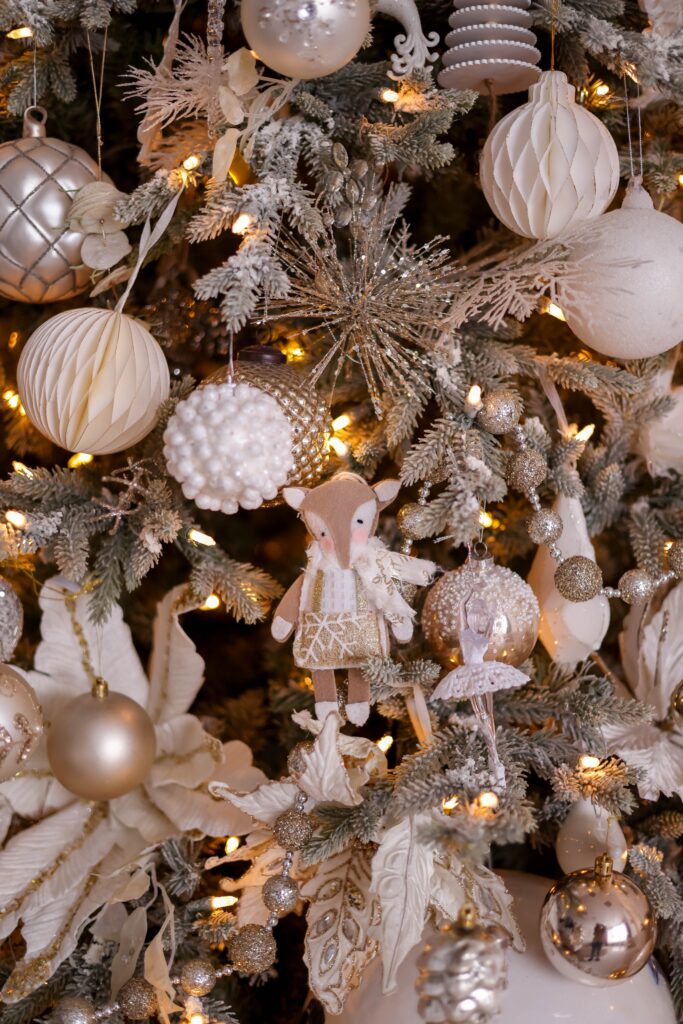Tinsel, that shimmering and festive decoration, is a beloved symbol of holiday cheer and merriment, adding a touch of sparkle to our homes during the celebratory season. However, have you ever wondered why tinsel is, surprisingly, considered illegal in some places? This article will explore the intriguing reasons behind this ban, uncovering the potential hazards and environmental concerns associated with this seemingly harmless adornment. Prepare to uncover the hidden complexities surrounding the forbidden allure of tinsel and gain a deeper appreciation for the importance of responsible decoration choices during the holidays.

Table of Contents
Environmental Concerns
Introduction to Environmental Impact
Tinsel, a popular holiday decoration, can have significant environmental impact. It is typically made from PVC or other plastic materials, which are derived from fossil fuels and have a high carbon footprint. The production and disposal of tinsel contribute to air and water pollution, as well as the depletion of natural resources. As a result, many individuals and organizations have raised concerns about the environmental consequences of using tinsel during the holiday season.
Use of Lead in Tinsel
One of the major environmental concerns associated with tinsel is its use of lead. In the past, lead was commonly added to tinsel to enhance its shine and prevent it from tangling. However, lead is a highly toxic substance that can have detrimental effects on human health and the environment. As a result, the use of lead in tinsel has been heavily regulated in many countries due to its potential to cause lead poisoning.
Lead Poisoning Risks
Lead poisoning is a serious health risk associated with the use of lead-based tinsel. When tinsel is handled or comes into contact with surfaces, it can shed microscopic particles of lead. These particles can be easily ingested or inhaled, leading to lead poisoning. Children are particularly vulnerable to the toxic effects of lead, which can impair their cognitive development and cause long-term health problems. The risks of lead poisoning have prompted regulatory measures to restrict the use of lead in tinsel production.
Toxicity to Wildlife
Tinsel poses a significant threat to wildlife due to its non-biodegradable nature and potential for ingestion. Marine animals, such as turtles and fish, can mistake tinsel for food and consume it, leading to internal injuries and digestive blockages. Additionally, birds may use tinsel for nest-building, exposing their young to toxicity. These harmful effects on wildlife highlight the need for alternative, environmentally-friendly decorations to reduce the impact on ecosystems.
Non-Biodegradable Nature
Another environmental concern associated with tinsel is its non-biodegradable nature. Traditional tinsel can take hundreds of years to break down in the environment, contributing to plastic pollution. As it decomposes, tinsel releases microplastics that can contaminate the soil, water, and air, posing risks to plants, animals, and humans. The persistence of tinsel in the environment underscores the importance of finding sustainable alternatives that can be easily recycled or biodegraded.
Fire Hazards
Combustibility of Tinsel
Tinsel is highly combustible, making it a potential fire hazard. The thin, metallic strands can ignite easily, especially when exposed to open flames or heat sources. Once ignited, tinsel can rapidly spread the fire and contribute to the intensity of the flames. As a result, many fire safety experts caution against using tinsel in homes and public spaces, particularly in close proximity to candles, fireplaces, or other heat-emitting devices.
Higher Risk of Electrical Fires
In addition to its combustibility, tinsel can increase the risk of electrical fires. When tinsel is draped over electrical cords or Christmas lights, it can create a dangerous combination of flammable material and electricity. If the tinsel becomes overheated or damaged, it can ignite the surrounding objects or cause a short circuit, leading to an electrical fire. This heightened risk underscores the importance of practicing safe electrical usage during the holiday season.
Increased Flammability with Artificial Trees
The presence of artificial trees further amplifies the fire hazards associated with tinsel. Artificial trees are typically made from plastic materials that are highly flammable. When tinsel is hung on these trees, it can easily come into contact with the heat generated by Christmas lights or other electrical components. This combination of flammable materials significantly increases the potential for a fire to spread quickly, posing a serious threat to life and property.
Tinsel as an Ignition Source
Another concern is that tinsel can serve as an ignition source for other flammable objects. If tinsel comes into contact with curtains, furniture, or other decorations, it can ignite them and cause a fire to rapidly escalate. This risk is particularly significant in homes with young children or pets, who may inadvertently knock down or play with tinsel, increasing the likelihood of accidents and fires. As a result, many fire safety agencies recommend avoiding the use of tinsel altogether to mitigate these risks.
Health and Safety Risks
Choking and Injury Hazards
Tinsel presents various health and safety risks, particularly to children and pets. The long, shiny strands can be enticing to young children, who may try to ingest or play with them. This poses a choking hazard, as the strands can become entangled in the throat or digestive system, potentially leading to life-threatening situations. Furthermore, the fragile nature of tinsel can cause it to break easily, resulting in sharp edges that can cause injuries if stepped on or handled improperly.
Tinsel as a Strangulation Risk
The use of tinsel in homes with infants or young children also poses a strangulation risk. The long, thin strands can inadvertently wrap around a child’s neck, resulting in strangulation or suffocation. This is of particular concern when tinsel is hung low or within reach of small children, who may be attracted to its shiny appearance. To ensure the safety of young children, it is important to avoid using tinsel or hang it out of their reach.
Inhalation and Respiratory Issues
Tinsel can also contribute to respiratory issues when its metallic particles are inhaled. The shedding or degradation of tinsel can release small metallic fibers and dust particles into the air, which can be inhaled and irritate the respiratory system. This is especially problematic for individuals with pre-existing respiratory conditions, such as asthma or allergies, as it can exacerbate their symptoms and lead to breathing difficulties. Individuals should be cautious when handling or being in close proximity to tinsel to minimize the risk of respiratory issues.
Allergic Reactions to Tinsel
Some individuals may also experience allergic reactions to tinsel, specifically to the materials used in its production. Tinsel is often made from artificial materials, such as PVC, which can contain chemicals known to trigger allergic responses. Contact with tinsel can cause skin irritation, itching, and redness, particularly in individuals with sensitive skin or known allergies. As with any potential allergen, it is important for individuals to be aware of their personal sensitivities and avoid prolonged contact with tinsel if allergic reactions occur.
Regulatory Measures
Product Safety Regulations
In response to the various health, safety, and environmental concerns associated with tinsel, regulators have implemented product safety regulations. These regulations aim to ensure that tinsel and other holiday decorations meet specific safety standards, such as flammability testing, material restrictions, and labeling requirements. By enforcing these regulations, authorities seek to protect consumer health, minimize environmental impact, and maintain a high level of product safety throughout the market.
Lead Content Restrictions
Due to the significant risks of lead poisoning, many countries have established stringent restrictions on the use of lead in tinsel production. These restrictions aim to minimize exposure to lead, particularly for children who are most susceptible to its toxic effects. By limiting lead content in tinsel, regulators aim to protect public health and promote the use of safer alternatives.
Stringent Fire Safety Standards
To address the fire hazards associated with tinsel, fire safety standards have been established for holiday decorations. These standards dictate the flammability requirements that tinsel and other festive materials must meet to be considered safe for use. By adhering to these stringent fire safety standards, manufacturers can ensure the production of tinsel that has a lower risk of igniting and spreading fires.
Child Safety Regulations
Given the choking and strangulation risks posed by tinsel, child safety regulations have been implemented to protect young children from harm. These regulations require manufacturers and retailers to adhere to certain safety guidelines, such as age restrictions and warning labels, to prevent incidents involving tinsel-related injuries in children. These measures strive to promote the safe use of decorations during the holiday season, especially when young children are present.

Alternatives to Tinsel
Introduction to Tinsel Alternatives
With the growing concerns surrounding tinsel, individuals are increasingly seeking alternatives that can offer a festive touch without the associated risks. Fortunately, there are numerous alternative decorations available that can provide the same holiday spirit while minimizing environmental impact and health hazards.
Garlands and Ribbons
Garlands and ribbons are popular alternatives to tinsel, offering vibrant colors and a decorative flair. Made from fabric or natural materials, such as paper or burlap, these decorations are often biodegradable and environmentally friendly. Garlands and ribbons can be hung on Christmas trees, draped along staircases, or used to adorn mantels, providing a festive and safe option for individuals who want to avoid the risks associated with tinsel.
Festive Lights and Ornaments
Festive lights and ornaments are classic alternatives to tinsel, adding a touch of elegance and sparkle to holiday decorations. LED lights, in particular, are energy-efficient and have a lower risk of causing fires compared to traditional incandescent lights. Additionally, ornaments made from glass, wood, or other non-toxic materials provide a safer option for those concerned about potential health risks. These alternatives offer endless possibilities for creativity and personalization while maintaining a safe and festive atmosphere.
Natural Decorations
Embracing natural decorations is another way to avoid the potential hazards of tinsel. Pinecones, holly branches, and dried fruits can add a rustic and environmentally-friendly touch to holiday decor. Furthermore, incorporating fresh greenery, such as wreaths made from real tree branches, can evoke a sense of tradition and natural beauty. By opting for natural decorations, individuals can minimize their environmental impact and enjoy the beauty of the holiday season in a sustainable and safe manner.
Other Creative Ideas
Beyond the traditional alternatives, there are many other creative ideas individuals can explore to replace tinsel. Handmade paper chains, personalized ornaments, or even origami figures can add a personal touch to holiday decorations. Crafting decorations with family and friends can become a cherished tradition and a way to bond during the holiday season. The key is to let creativity flourish and embrace alternatives that align with personal preferences while prioritizing safety and sustainability.
The Role of Cultural and Historical Factors
Origins of Tinsel Tradition
The tradition of using tinsel as holiday decor can be traced back to the 17th century in Germany. Initially, tinsel was made from thin strips of hammered silver, reflecting candlelight and adding a shimmering effect to Christmas trees. Over time, the material used for tinsel transitioned from silver to other metals, and eventually to modern synthetic materials. Nonetheless, the tradition of adorning trees with tinsel has persisted, albeit with evolving safety and environmental concerns.
Cultural Associations and Symbolism
Tinsel holds cultural associations and symbolism in many societies. It is often seen as a representation of festiveness, sparkle, and joy during the holiday season. Tinsel’s shiny appearance evokes a sense of enchantment, complementing the overall ambiance of celebration. However, cultural perceptions and associations evolve, and as individuals become more aware of the potential risks associated with tinsel, alternative decorations are being embraced to maintain holiday traditions while prioritizing safety and sustainability.
Historical Incidents and Accidents
Throughout history, there have been incidents and accidents related to tinsel that have contributed to the concerns surrounding its use. From fires caused by tinsel igniting traditional candles to instances of children ingesting or getting entangled in tinsel strands, these incidents have raised awareness about the potential hazards associated with the decoration. As a result, safety regulations and guidelines have been established to mitigate risks and protect individuals from harm.
Shifts in Cultural Preferences
In recent years, there has been a noticeable shift in cultural preferences regarding holiday decorations. As individuals become more conscious of environmental impact and prioritize safety, the use of tinsel has declined in favor of alternative, more sustainable options. While some still hold sentimental attachments to tinsel and appreciate its traditional charm, others are choosing to explore safer and eco-friendly alternatives that align with their values. This shift reflects the evolving cultural landscape and the desire to celebrate the holiday season responsibly.

Public Perceptions and Opinions
Mixed Reactions
Public perceptions and opinions regarding the use of tinsel are mixed. While some individuals cherish the nostalgic charm and festive ambiance it brings, others express concerns about its potential hazards and environmental impact. The decision to use or avoid tinsel often stems from a combination of personal values, cultural traditions, and awareness of the associated risks. It is crucial to acknowledge and respect these diverse perspectives while fostering an open dialogue about the trade-offs between safety, tradition, and sustainability.
Nostalgia and Sentimentality
For many, the allure of tinsel lies in the sentimental value attached to it. Tinsel has been a staple of holiday decorations for generations, evoking memories of childhood joy and familial warmth. Its shiny appearance and delicate texture can invoke feelings of nostalgia and sentimental attachment, making it difficult for some to give up the tradition. However, as awareness grows about the potential risks, individuals are seeking ways to preserve the sentimentality while prioritizing safety and sustainability.
Awareness and Education
One positive outcome of the discussions surrounding tinsel is the increased awareness and education regarding its potential risks. As individuals become more informed about the environmental and health hazards associated with tinsel, they can make more informed choices about their holiday decorations. Furthermore, educational campaigns and public outreach efforts can play a crucial role in promoting safer alternatives and encouraging responsible holiday celebrations.
Trade-Offs: Safety vs. Tradition
The use of tinsel raises an important and complex dilemma: the trade-off between safety and tradition. Balancing the desire to maintain cultural traditions and nostalgic charm with the need to prioritize health, safety, and environmental sustainability can be challenging. It requires individuals to critically evaluate their values, make informed choices, and be open to embracing new alternatives that align with their priorities. The trade-offs inherent in this decision-making process demonstrate the dynamic nature of cultural traditions and the importance of adapting to evolving societal needs and concerns.
Possible Future Changes
Research and Development Efforts
Research and development efforts are being undertaken to address the concerns associated with tinsel. Scientists and innovators are exploring alternatives that are safer, more eco-friendly, and sustainable. These efforts aim to develop materials that can replicate the sparkle and beauty of tinsel while minimizing environmental impact. Through ongoing research and collaboration, future innovations may provide even more viable options for festive decorations that meet the standards of safety and sustainability.
Emerging Biodegradable Tinsel
One area of focus in the search for tinsel alternatives is the development of biodegradable options. Innovators are exploring materials that can provide the same visual appeal as tinsel while breaking down naturally in the environment. Biodegradable tinsel would help mitigate plastic pollution and reduce the long-term environmental impact of holiday decorations. The emergence of such options holds promise for a more sustainable future, offering individuals the chance to celebrate while minimizing harm to the planet.
Advancements in Fire-Resistant Materials
Advancements in fire-resistant materials can also contribute to the safe use of holiday decorations. Researchers are developing materials with enhanced fire-resistant properties to minimize the risk of tinsel and other decorations igniting and contributing to fires. By incorporating these advancements into the production of festive decorations, individuals can enjoy the beauty and joy of the holiday season without compromising safety.
Collaboration between Industry and Regulators
To drive change and implement effective solutions, collaboration between industry stakeholders and regulators is essential. Through open and constructive dialogue, manufacturers can work with regulators to develop and adhere to stricter safety and environmental standards for holiday decorations. This collaboration fosters a culture of accountability, encourages innovation, and paves the way for safer, more sustainable options. By working together, industry and regulators can ensure that holiday decorations meet the highest safety and environmental standards, benefiting both individuals and the planet.

Conclusion
Tinsel, once a beloved holiday decoration, now comes with a myriad of concerns regarding its safety and environmental impact. From lead poisoning risks and fire hazards to choking and injury hazards, tinsel poses significant risks to human health and the wellbeing of the environment. However, with increased awareness and education, individuals are seeking alternatives that provide festive cheer without compromising safety or sustainability.
From garlands and ribbons to festive lights and natural decorations, there are numerous alternatives available that offer the same joy and aesthetic appeal as tinsel. By embracing these alternatives, individuals can minimize the potential risks associated with tinsel while enjoying the traditions and sentimental value of holiday decorations.
Regulatory measures play a crucial role in ensuring the safety and environmental responsibility of holiday decorations. Restrictions on lead content and stringent fire safety standards help protect individuals from harm and reduce environmental impact. Additionally, public perceptions and opinions are evolving, recognizing the need to prioritize safety and sustainability while preserving sentimentality and cultural traditions.
Possible future changes include ongoing research and development efforts to create biodegradable tinsel and advancements in fire-resistant materials. Furthermore, collaboration between industry stakeholders and regulators encourages innovation and drives progress towards safer, more sustainable holiday decorations.
As individuals make informed choices and explore alternative options, they contribute to a safer, more environmentally responsible holiday season. By prioritizing safety and sustainability, we can celebrate joyfully while protecting our health, the environment, and cherished traditions for generations to come.

